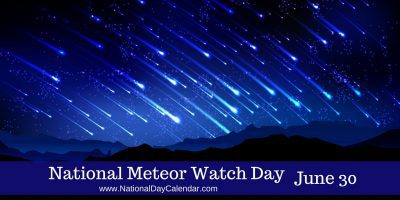 June 30, 2017 (Friday)
June 30, 2017 (Friday)
You may be surprised (I was) to know that every day millions of meteors streak across our sky. They glow for only about a second as they streak through our atmosphere and are seen by us only as they move between 70 miles to 34 miles above the earth. They often disintegrate as they move between altitudes of 31 to 51 miles.
We usually revert to non-scientific descriptions and call them “shooting stars” or “falling stars,” but they are really only pieces of space debris, usually small rocks, most of them pebble size.

In the Northern Hemisphere, one of the most active meteor showers is the Perseids. Named after the constellation Perseus where the majority of the activity takes place, the meteors are caused by particles released by the comet 109P/Swift-Tuttle. Active from mid-July to late August, the Perseids are known to put on a dazzling display at its peak, especially when the skies are clear and the moon is new.
The chemical composition and the speed of the meteoroid will cause different hues to the light. Possible colors and elements producing them include orange/yellow (sodium), yellow (iron), blue/green (copper), purple (potassium), or red (silicate)
A list of meteor shower dates as well as a guide to successful watching can be found on the EarthSky website.
Find a place far from the city lights on a cloudless night, and wait for the show. Meteors sometimes occur in showers. National Meteor Watch Day is an excellent time to plan for a meteor watching party. Whether it is to catch a few stray falling stars or to watch an entire meteor shower, gathering the kids or a few friends to map the constellations while waiting to make a wish or two is sure to be a fun time.
The information presented here was found at https://www.nationaldaycalendar.com/days-2/national-meteor-watch-day-june-30/
Much of the blog is directly quoted from the web site.
